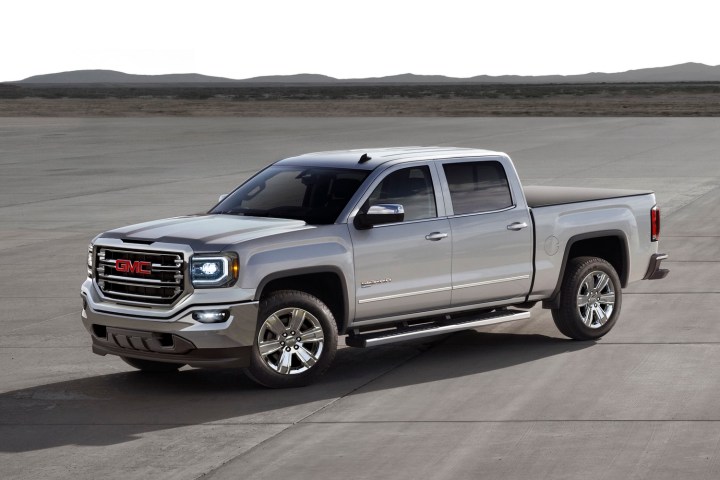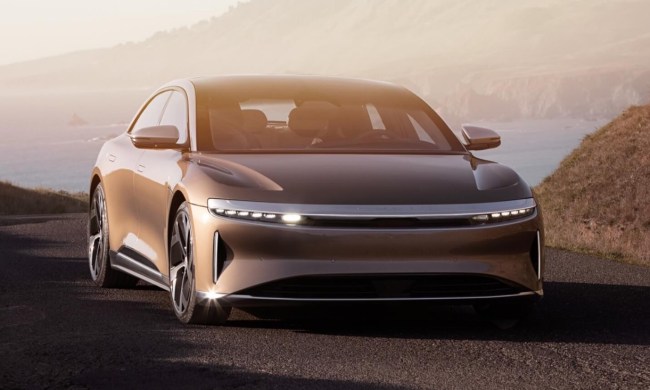
Unlike the full hybrid system in, say, a Toyota Prius or GM’s own Chevy Malibu Hybrid, mild-hybrid systems generally can’t propel a vehicle on electricity alone. Instead, they take some of the load off the internal-combustion powertrain with supplementary electric power. That means smaller efficiency gains, but also lower costs and less engineering work compared to full hybrids.
Previously used on a handful of sedans, the eAssist should boost the Chevy and GMC trucks’ city fuel economy by about 13 percent, GM says. Hybrid hardware includes a single electric motor and 0.45-kilowatt-hour lithium-ion battery pack, which work in concert with a 5.3-liter V8 and eight-speed automatic transmission that carry over from non-hybrid Silverado and Sierra models, with rear-wheel drive. This is the second time GM has offered hybrid powertrains on its full-size trucks; a previous generation launched in 2009 never sold particularly well.
GM says it cribbed some elements from other electrified models, including battery cells from the Malibu Hybrid and control software from the recently-redesigned Chevy Volt. The eAssist system adds 100 pounds, but also provides an extra 13 horsepower and 44 pound-feet of torque.
Official EPA numbers aren’t in yet, but GM expects both trucks to get 20 mpg combined (18 mpg city, 24 mpg highway). That’s a 2 mpg improvement across the board compared to non-hybrid models. That may not seem like a lot, but because the Silverado and Sierra don’t have particularly high gas mileage to begin with, it should work out to a significant amount of fuel savings.
Not that many drivers will have a chance to find out. GM only plans to build 500 Silverado and 200 Sierra eAssist trucks for the 2016 model year. These will only be sold in California, but GM may make the hybrid models more widely available for 2017 if Golden State customers respond positively. GM’s limited plans still leave the door open for Ford to make a bigger impact, assuming its hybrid F-150 comes to market on a larger scale.


